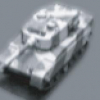Free Online Productivity Tools
i2Speak
i2Symbol
i2OCR
iTex2Img
iWeb2Print
iWeb2Shot
i2Type
iPdf2Split
iPdf2Merge
i2Bopomofo
i2Arabic
i2Style
i2Image
i2PDF
iLatex2Rtf
Sci2ools
ICIP
2004
IEEE
2004
IEEE
A probabilistic framework for object recognition in video
We propose a solution to the problem of object recognition given a continuous video sequence containing multiple views of an object. Initially, object models are acquired from images of the objects taken from different views. Recognition is achieved from the video sequences by employing a multiple hypothesis approach. Appearance similarity, and pose transition smoothness constraints are used to estimate the probability of the measurement being generated from a certain model hypothesis at each time instant. A smooth gradient direction feature that is quasi-invariant to illumination changes and noise is used to represent the appearance of object. The pose of the object at each time instant is modelled as a von Mises-Fisher distribution. Recognition is achieved by choosing the hypothesis set that has accumulated the maximum evidence at the end of the sequence. We have performed detailed experiments demonstrating the viability of the proposed approach.
Certain Model Hypothesis | Continuous Video Sequence | ICIP 2004 | Image Processing | Multiple Hypothesis Approach | Object Recognition | Transition Smoothness Constraints |
| Added | 24 Oct 2009 |
| Updated | 27 Oct 2009 |
| Type | Conference |
| Year | 2004 |
| Where | ICIP |
| Authors | Omar Javed, Mubarak Shah, Dorin Comaniciu |
Comments (0)

